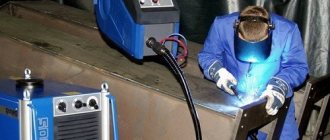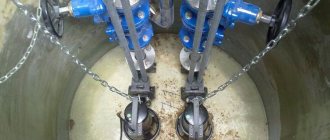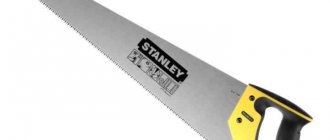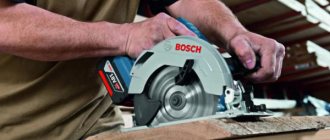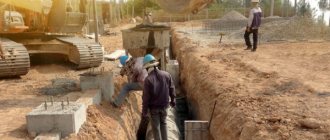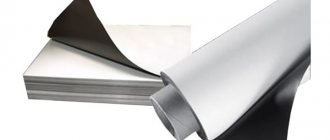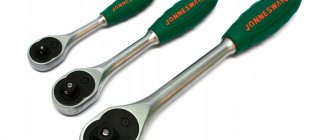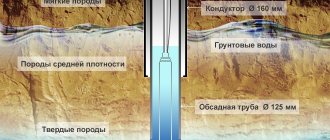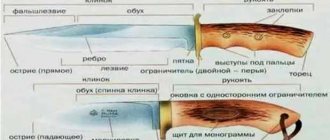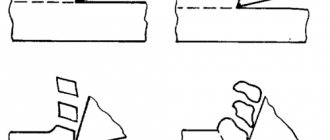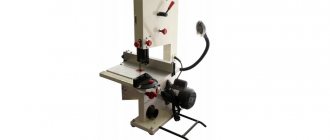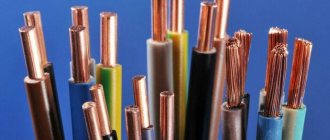Purpose of tin bronzes
Bronzes are copper alloys alloyed with various elements except zinc (they are called brass). Bronze is marked with the letter Br
, followed by the capital letters of the alloying elements and the percentage of copper, then the percentage of each alloying element. Wrought copper alloys are supplied in soft (annealed and hardened), semi-hard (compression 10-30%), hard (compression 30-50%) and extra-hard (compression more than 60%) states. In tin bronzes the main alloying element is tin.
Tin bronzes should not be confused with alloys based on tin or lead, called babbits, which are marked with the letter B
, followed by a number indicating the tin content of the alloy.
AREAS OF APPLICATION AND MECHANICAL PROPERTIES OF TIN CASTING BRONZES
| Brand | Casting method | Tensile strength σв, MPa (kgf/mm²) | Relative elongation after rupture δ5, % | Brinell hardness HB, MPa (kgf/mm²) | Applicability |
| no less | |||||
| GOST 613-79 | |||||
| BrO10S10 | chill sand | 196 (20) 176,2 (18) | 6 7 | 735 (78) 637 (65) | Sliding bearings operating under conditions of high specific pressures. |
| BrO10F1 | chill sand | 245 (25) 215,5 (22) | 3 3 | 882 (90) 784 (80) | Friction units of fittings, highly loaded parts of screw drives, pressure and spindle nuts, worm gear rims. |
| BrO10TS2 | chill sand | 225,5 (23) 215,5 (22) | 10 10 | 735 (75) 637 (65) | Fittings, anti-friction parts, bearing shells, friction parts and propeller shaft linings. |
| BrO3Ts12S5 | chill sand | 206 (21) 176,2 (18) | 5 8 | 588 (60) 588 (60) | General purpose fittings |
| BrO3TS7S5N1 | chill sand | 206 (21) 176,2 (18) | 5 8 | 588 (60) 588 (60) | Parts operating in oil, steam, and fresh water |
| BrO4Ts4S17 | chill sand | 147 (15) 147 (15) | 12 5 | 588 (60) 588 (60) | Antifriction products. |
| BrO4TS7S5 | chill sand | 176 (18) 147 (15) | 4 6 | 588 (60) 588 (60) | Fittings, antifriction products. |
| BrO5S25 | chill sand | 137,2 (14) 147 (15) | 6 5 | 588 (60) 441 (45) | Bimetallic plain bearings |
| BrO5TS5S5 | chill sand | 176 (18) 147 (15) | 4 6 | 588 (60) 588 (60) | Fittings, antifriction products, bearing shells |
| BrO6Ts6S3 | chill sand | 176 (18) 147 (15) | 4 6 | 588 (60) 588 (60) | Fittings, antifriction products, bearing shells. |
| BrO8TS4 | chill sand | 196 (20) 196 (20) | 10 10 | 735 (75) 735 (675) | Fittings, pipeline fittings, pumps operating in sea water. |
The chemical composition of bronzes is determined according to GOST 1953.1-79 - GOST 1953.12-7, GOST 25086-87.
Tensile strength and relative elongation after rupture are determined in accordance with the regulatory and technical documentation. The tensile test is carried out in accordance with GOST 1497-84. Brinell hardness is determined in accordance with GOST 9012-59. The correspondence of tin bronze grades of the current standard and GOST 613-65 is given below. CONFORMITY OF TIN BRONZES GRADES
| Bronze grade according to GOST 613-79 | Bronze grade according to GOST 613-65 |
| BrO10S10 | — |
| BrO10F1 | — |
| BrO10TS2 | — |
| BrO3Ts12S5 | BrOTsS3-12-5 |
| BrO3TS7S5N1 | BrOTsSN3-7-5-1 |
| BrO4Ts4S17 | BrOTsS4-4-17 |
| BrO4TS7S5 | BrOTsS3.5-7-5 |
| BrO5S25 | — |
| BrO5TS5S5 | BrOTsS5—5-6 |
| BrO6Ts6S3 | — |
| BrO8TS4 | — |
AREAS OF APPLICATION AND MECHANICAL PROPERTIES OF TIN CASTING BRONZES IN PIGS
| Brand | Casting method | Ultimate compressive strength σcom, MPa | Applicability |
| GOST 614-97 | |||
| BrO10F1 | chill sand | 245 216 | for the manufacture of gearboxes. |
| BrO3Ts13S4 | — | — | charge material for bronze Br03TS12S5 |
| BrO3Ts6S5 | — | — | for the needs of the national economy |
| BrO3TS8S4N1 | — | — | charge material for bronze BrO3Ts7S5N1 |
| BrO4Ts8S5 | — | — | charge material for bronze Br04TS7S5 |
| BrO5TS6S5 | — | — | charge material for bronze Br05TS5S6 |
| BrО6Ц6С2х | — | — | for artistic casting |
This standard applies to cast bronzes in ingots, made from scrap and waste of non-ferrous metals and alloys and intended for the needs of the national economy and export, as well as as a charge material for the manufacture of bronzes in accordance with GOST 493 and GOST 613.
Color markings are applied on the ends of the pigs with indelible paint in the form of vertical stripes and crosses for bronze grades: - BrO3Ts8S4N1 - black;
— BrO3Ts6S5 — red and green; — Br03TS13S4 — green; — Br04TS8S5 — blue; — Br05TS6S5 — red; — Br06Ц6С2х — green cross; - BrO10F1 - blue, green, dark blue. AREAS OF APPLICATION AND MECHANICAL PROPERTIES OF PRESSURE TREATED TIN BRONZES
| Brand | Limit | Temporary resistance σв, MPa | Relative elongation after rupture (narrowing), % | Brinell hardness HB, MPa | Applicability |
| GOST 5017-2006 | |||||
| BrOF2-0.25 | — — | — — | — — | — — | screws, flexible hose tapes, conductive parts, welding filler materials |
| BrOF4-0.25 | hard soft | 685 295 | — (65) 40-58 (85) | 157-167 54-68 | for tubes of control and measuring instruments and other instruments, for pressure springs |
| BrOF6.5-0.15 | deformed annealed | 730 220 | — (10) — (65) | 180 80 | flat and spiral springs, bearings, fittings, bushings, gears, worms |
| BrOF6.5-0.4 | hard soft | 685-785 295-440 | 7-12 (61) 60-70 (80) | 157-216 68-82 | for pulp and paper industry meshes, springs, machine parts and bearings |
| BrOF7-0.2 | deformed annealed | 950 410 | — (8) — (52) | 160 60 | flat and spiral springs, bearings, fittings, bushings, gears, worms |
| BrOF8-0.3 | hard soft | 980-1180 390-490 | 1-2 55-65 | 176-235 88-98 | for pulp and paper industry meshes |
| BrOTs4-3 | deformed annealed | 550 350 | — (5) — (40) | 160 60 | springs, chemical equipment parts |
| BrOTsS4-4-2.5 | deformed annealed | 600 320 | — (3) — (40) | 170 60 | tapes and strips used for gaskets in bushings and bearings |
| BrOTsS4-4-4 | hard soft | 980-1180 315-355 | 1-2 55-65 | 60 60 | tapes and strips used for gaskets in bushings and bearings |
This standard applies to pressure-processed tin bronzes intended for the manufacture of semi-finished products used in various industries.
AREAS OF APPLICATION AND MECHANICAL PROPERTIES OF TIN BRONZES NOT PROVIDED BY STANDARDS
| Brand | Casting method | Temporary resistance σв, MPa | Relative elongation after rupture (narrowing), % | Brinell hardness HB, MPa | Applicability |
| not provided for by standards | |||||
| BrO10 | chill sand | 295 215 | 3-10 (10) 3-10 (10-14) | 108 68-78 | for fittings and shaped castings |
| BrO3TS7S5N | chill sand | 205 175 | 5 8 | 59 59 | — |
| BrO19 | chill mold | — | 0,5 | 157 | used for fittings and shaped castings |
| BrO3.5Ts7S5 | chill sand | 175 145 | 4 6 | 59 59 | — |
| BrO8N4Ts2 | chill sand | 345 265 | 16 14 | 78,5 78,5 | — |
| BrO8S12 | chill sand | 145-195 145-175 | — 3-8 | 78,5-118 68,5-98 | for critical bearings operating at high pressures |
| BrOS10-10 | chill mold | 200 | 5 | 75 | parts operating under friction under lubrication conditions at medium loads and high sliding speeds: bushings, spools, bearings, as well as parts of water and fuel pumps |
| BrOS1-22 | chill mold | 120 | 10 | 40 | used for casting bearing shells on steel |
| BrOS5-25 | chill mold | 150 | 9 | 55 | parts operating on friction under lubrication conditions at medium and high sliding speeds: bushings, spools, bearings, as well as parts of water and fuel pumps |
| BrOSN10-2-3 | chill mold | 250 | 5 | 75 | parts operating under friction under lubrication conditions at high loads and sliding speeds, thrust and guide bushings, spools, thrust bearings, etc. |
| BrOF10-1 | chill mold | 250 | 31 | 90 | parts in the form of bushings that operate under friction under lubrication conditions at high loads and sliding speeds, as well as gears and special nuts |
| BrOTsS6-6-3 | chill mold | 200 | 8 | 65 | friction parts operating under lubrication conditions at average loads and sliding speeds, bushings and fittings of units |
Related documents:
example of implementation using tin bronze GOST 16130-90 - Wire and rods made of copper and copper-based alloys Welding. GOST 193-79 - Copper ingots. Technical conditions. GOST 434-78 — Rectangular wire and copper bars for electrical purposes. Technical conditions. GOST 492-2006 - Nickel, nickel and copper-nickel alloys processed by pressure. Stamps. GOST 495-92 - Copper sheets and strips. Technical conditions. GOST 546-2001 - Copper cathodes. Technical conditions. GOST 617-2006 — Copper and brass pipes of round section for general purposes. Technical conditions. GOST 767-91 - Copper anodes. Technical conditions. GOST 1018-77 - Aluminum, copper, brass and cupronickel tapes for capsules. Technical conditions. GOST 1173-2006 - Copper foil, tapes, sheets and plates. Technical conditions. GOST 1535-2006 - Copper rods. Technical conditions. GOST 1652.1-77 - Copper-zinc alloys. Methods for determining copper. GOST 1791-67 — Wire made of nickel and copper-nickel alloys for extension wires to thermoelectric converters. Technical conditions. GOST 2624-77 - Copper and brass capillary tubes. Technical conditions. GOST 3779-55 — Copper crushing posts. GOST 3822-79 — Bimetallic steel-copper wire. Technical conditions. GOST 4134-75 — Profiles made of copper alloys for commutators of electrical machines. Technical conditions. GOST 4515-93 - Copper-phosphorus alloys. Technical conditions. GOST 4752-79 — Copper crushing wire. Technical conditions. GOST 4775-91 — Uninsulated bimetallic steel-copper wires. Technical conditions. GOST 4960-75 — Electrolytic copper powder. Technical conditions. GOST 5063-73 — Strips made of copper-nickel alloys. Technical conditions. GOST 6750-75 — Copper nails for shipbuilding. Technical conditions. GOST 11383-75 — Thin-walled copper and brass tubes. Technical specifications GOST 15527-2004 - Copper-zinc (brass) alloys processed by pressure. Stamps. GOST 16038-80 — Arc welding. Welded connections for pipelines made of copper and copper-nickel alloy. Main types, structural elements and dimensions. GOST 16774-78 — Copper pipes of rectangular and square sections. Technical conditions. GOST 17217-79 — Pipes made of copper-nickel alloy grade MNZH5-1. Technical conditions. GOST 17711-93 — Copper-zinc (brass) casting alloys. Stamps. GOST 20900-75 — Waveguide copper and brass rectangular pipes. Technical conditions. GOST 21646-2003 — Copper and brass pipes for heat exchangers. Technical specifications GOST 29201-91 - Sliding bearings. Bushings made of copper alloys.
What determines the hardness of wood?
In our table you can find approximate values given for each wood species. However, it should be remembered that all indicators are not accurate - wood of the same type can have different values, since the following factors also influence hardness:
- growing conditions: humidity level, temperature conditions - trees grow slower in the cold, to protect the crown it becomes denser, accordingly, the wood itself becomes harder and more durable;
- age of the tree - with age, the density of wood increases, therefore, for the most durable products and floor coverings, craftsmen try to use “older” trees;
- place of wood cutting - in some trees the trunk has different density: at the core it can be higher, and decrease towards the bark, and vice versa;
- method of cutting the floor - depending on how the tree trunk was cut to produce the parquet board, it can be more or less hard.
Wood is cut in three ways: radial, tangential and transverse. With a radial cut, the cut is carried out lengthwise, perpendicular to the annual rings of the tree, which have an almost right angle on the surface of the board. This method allows you to achieve the highest hardness values. Tangential cutting is also performed longitudinally, but not perpendicularly; accordingly, peculiar patterns of growth rings are formed on the front surface. With a cross cut, the tree is divided perpendicular to the trunk and the direction of the grain.
Hardness is measured in HB - stands for Hardness Brinell. The tables most often do not indicate units of measurement; sometimes you can find the MPa indicator. 10 MPa is 1 HB, also equals 10 N/sq.mm.
